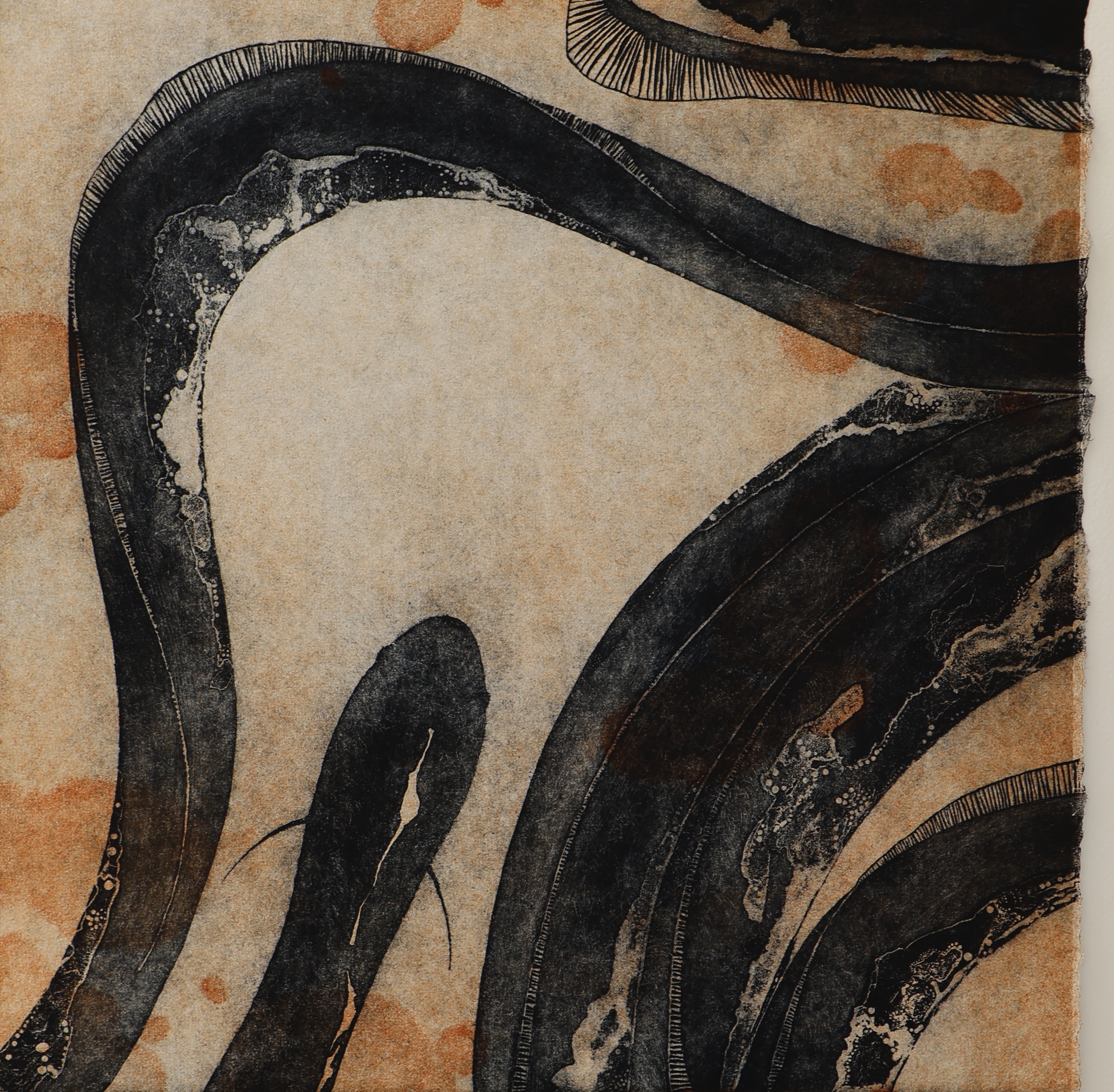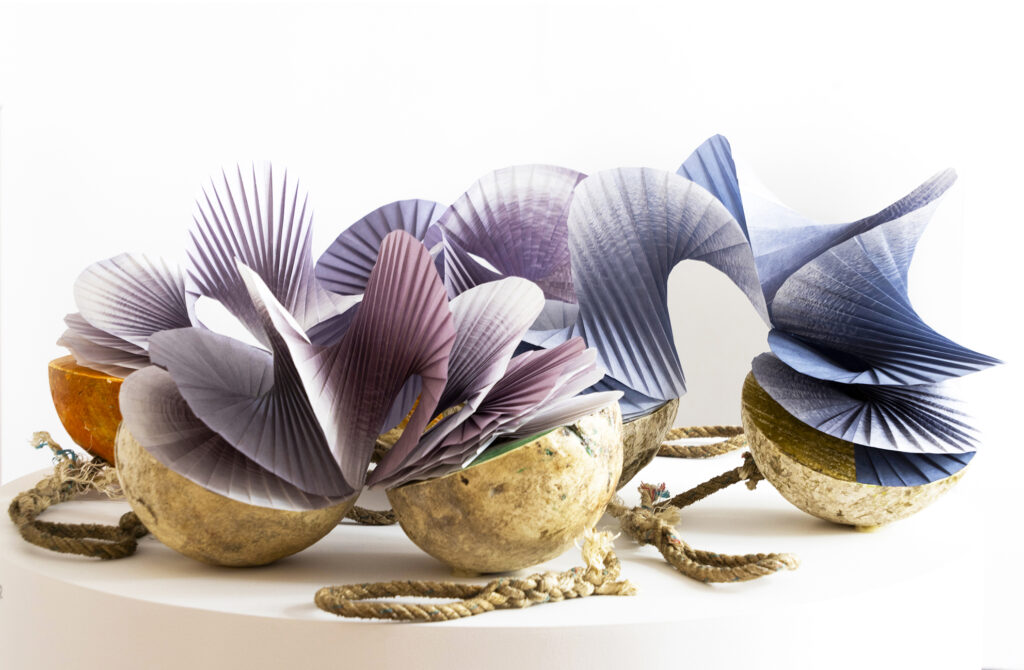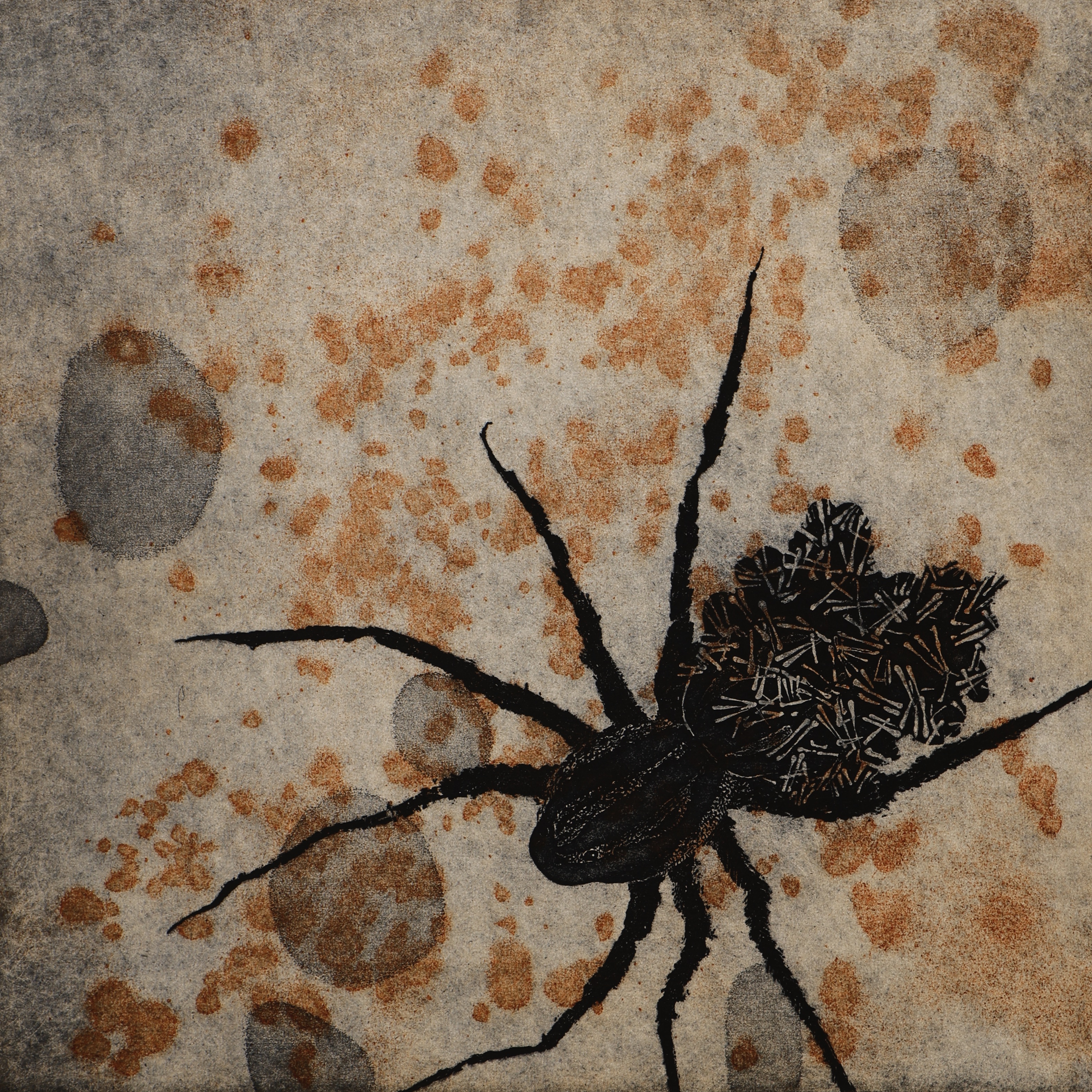
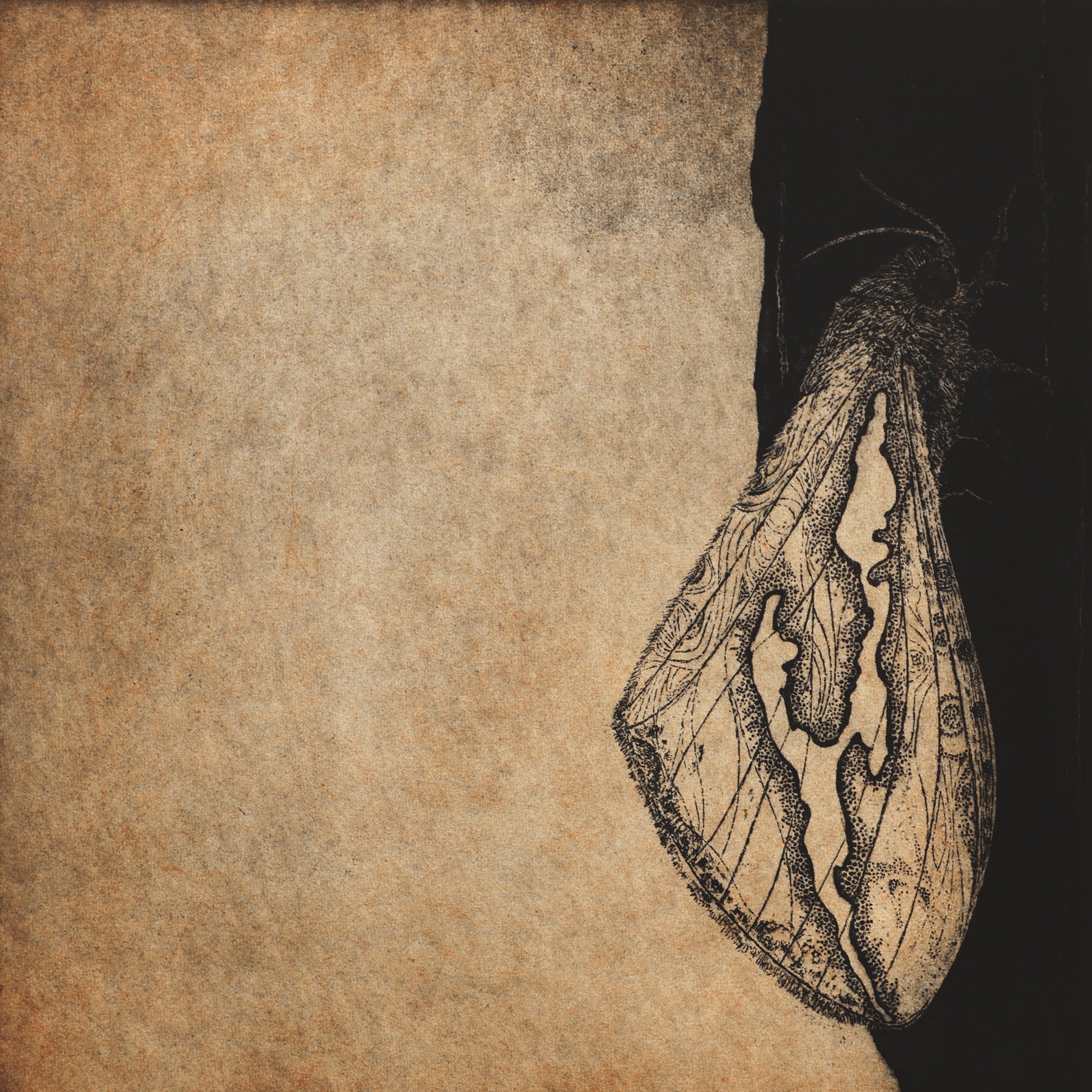
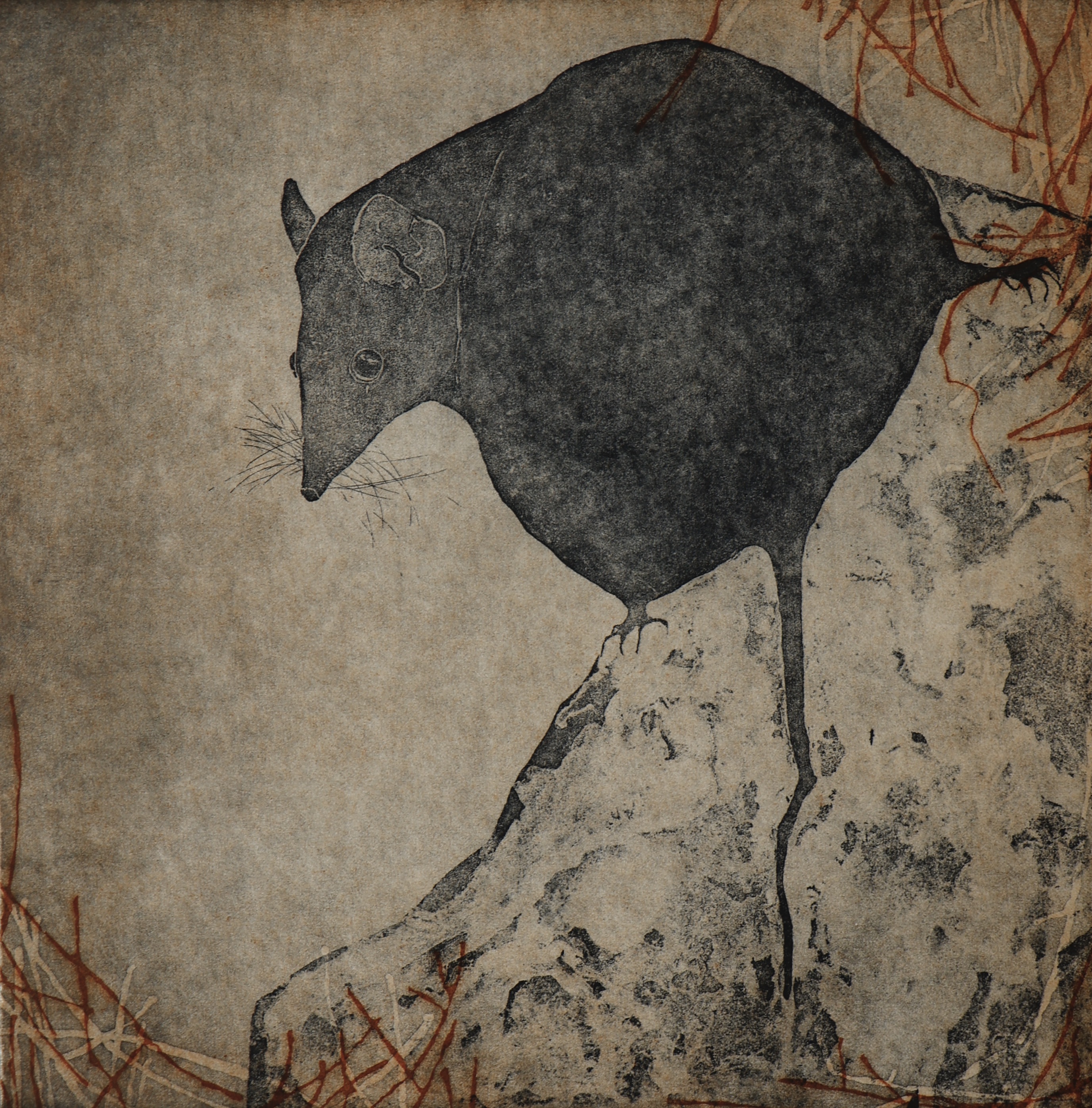
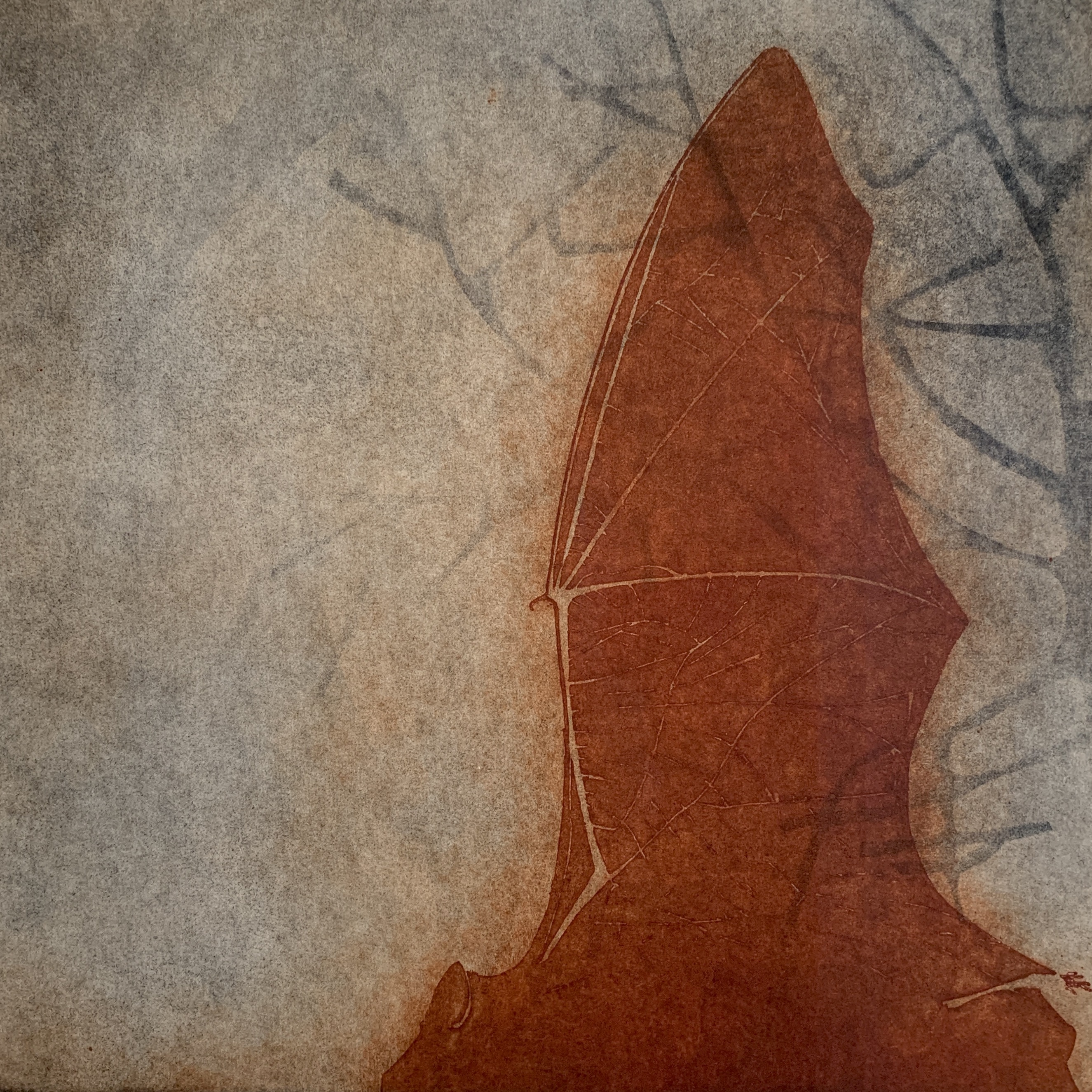
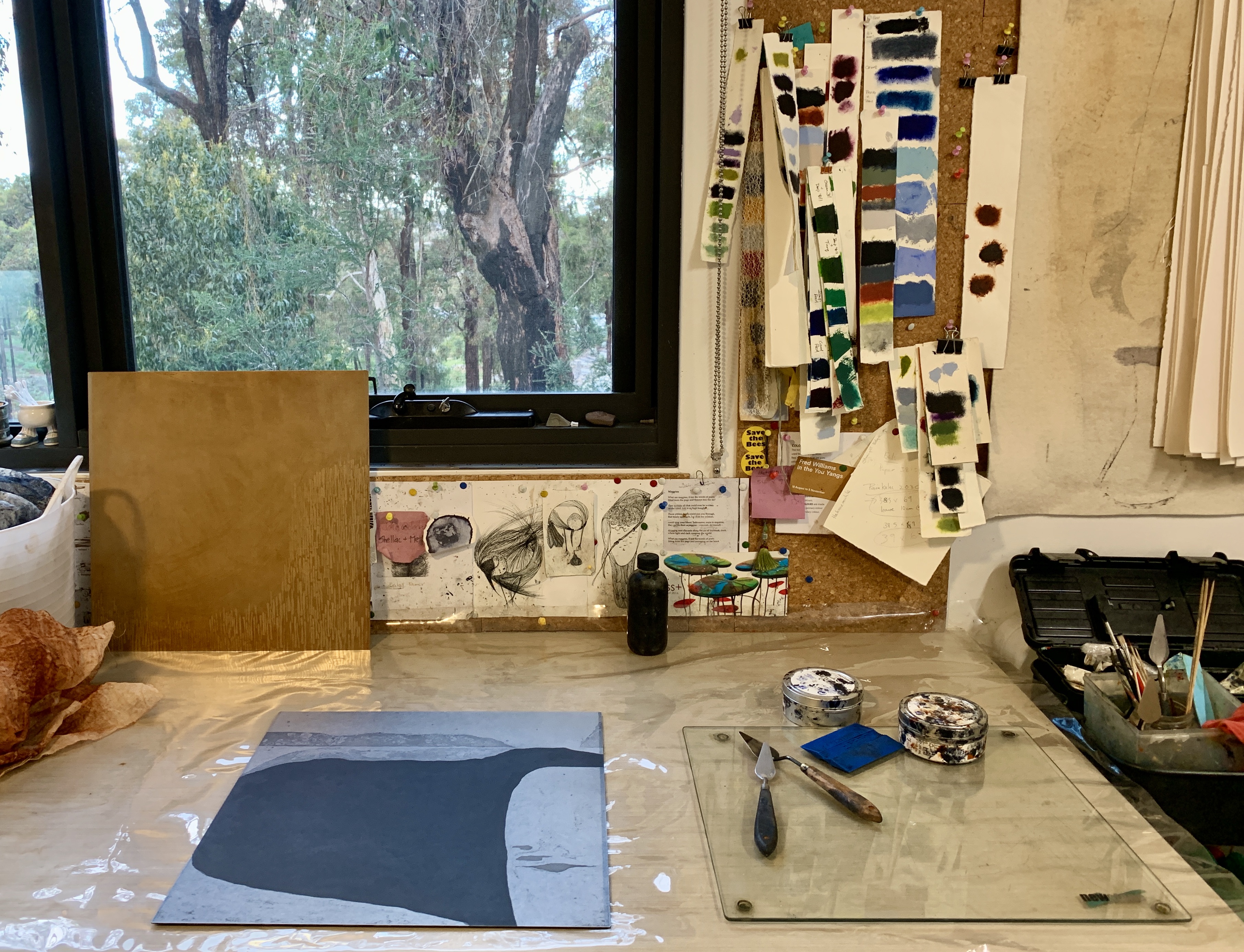
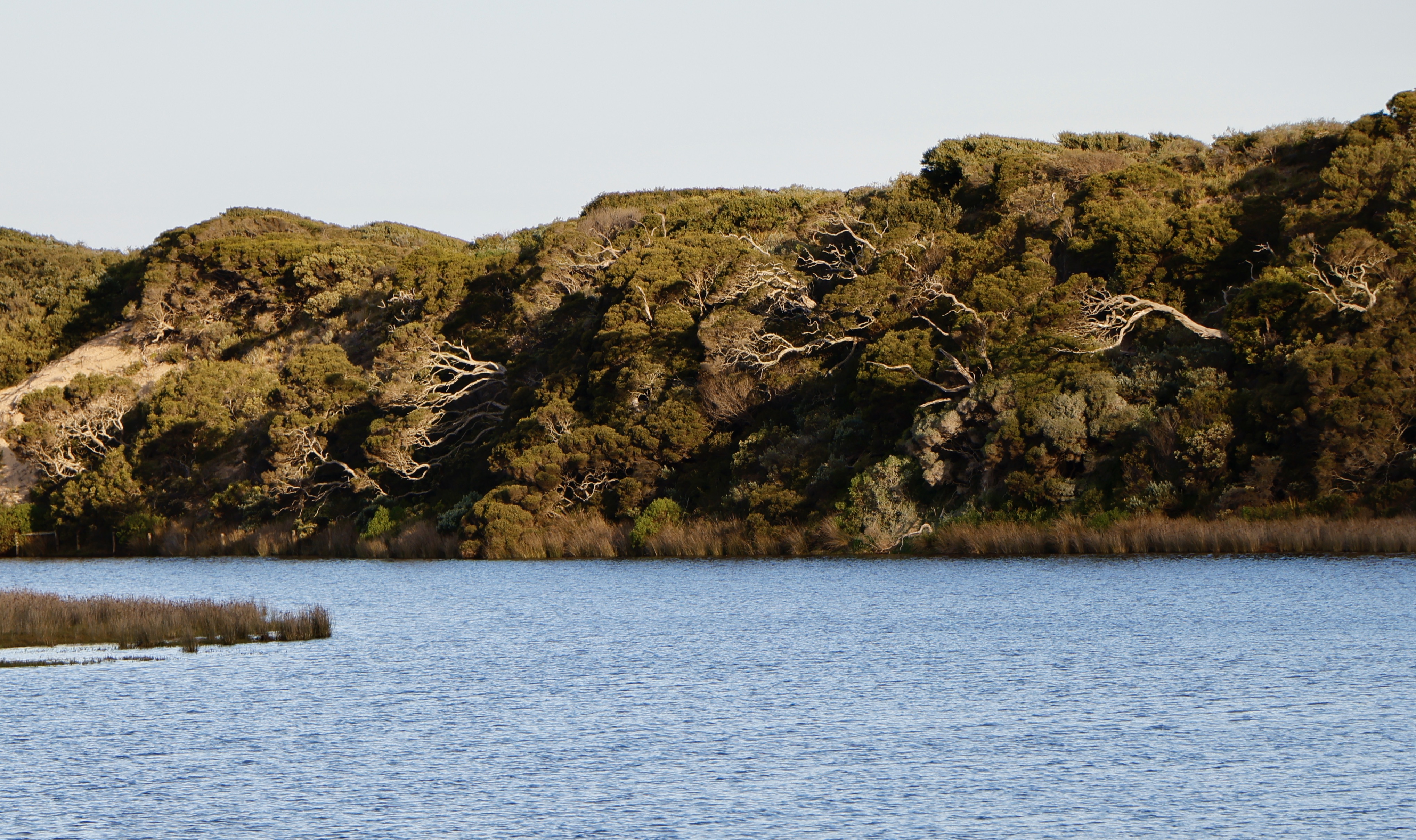
From top:
Bron Ives, 2021, Eels, three-plate aluminium etching on Hahnemuhle 300GSM warm white. Print size: 39 x 39 cm; paper size: 65 x 39 cm. Edition of 4.
Bron Ives, 2021, Wolf Spider, three-plate aluminium etching on Hahnemuhle 300GSM warm white. Print size: 39 x 39 cm; paper size: 65 x 39 cm. Edition of 7.
Bron Ives, 2021, Ghost Moth, – three-plate aluminium etching on Hahnemuhle 300GSM warm white. Print size: 39 x 39 cm; paper size: 65 x 39 cm. Edition of 6.
Bron Ives, 2021, Swamp Antechinus, three-plate aluminium etching on Hahnemuhle 300GSM warm white. Print size: 39 x 39 cm; paper size: 65 x 39 cm. Edition of 7.
Bron Ives, 2021, Microbat, three-plate aluminium etching on Hahnemuhle 300GSM warm white. Print size: 39 x 39 cm; paper size: 65 x 39 cm. Edition of 6.
Studio
Painkalac Estuary
Swamp Antechinus, Painkalac Creek by Bron Ives won second place in the 2021 Peebles Print Prize at Queenscliff Gallery. Ives’ print features this tiny marsupial mouse writ large, taking up maybe a third of the 39 x 39 cm multiplate etching. We see the Antechinus from behind, perched on a rock, looking out over its shoulder at the viewer, a pleading look on its face.
Engaging with this little creature in the wild is another story. Listed as ‘vulnerable’ under the EPBC Act, it is so small (c. 14 cm long with a good portion of which is tail) that its scientific name is Antechinus minimus – minimus meaning ‘smallest’, or ‘least’. According to the website of the local environmental group, ANGAIR, ‘the distribution and abundance of this small marsupial has declined significantly in the last 20 years’[1], but in 2020 they were rediscovered at Painkalac Creek, Ives’s local wetland and source of inspiration and wonder. They had not been recorded there since 2001.
This is the kind of story that Ives hopes to bring to light with her Painkalac series, which includes her winning print and will be exhibited at Queenscliff Gallery this December alongside the works of Brett Mallon. The series comprises thirteen prints, twelve depicting animals of the Painkalac Estuary and one a landscape of the estuary itself, an area spanning the traditional lands of the Wadawurrung and Gadubanud peoples. The series has been Ives’ labour of love during the lockdowns of 2020 and 2021, taking 20 months to complete. All the prints are multiplate etchings on aluminium, created in her home studio and printed using oil-based Charbonnel inks.
Despite her facility with the print medium, and obvious deep love of her local environment, Ives is relatively new both to print and to the Fairhaven area on Victoria’s famously picturesque Surf Coast. She and her partner moved here some five years ago after many years living and working overseas. Since childhood Ives has been artistic, but has never before had the opportunity to devote time to her artistic impulses. She settled on the Surf Coast with the twin desires of learning printmaking and learning about her local environment and, if possible, finding a way to combine these passions.
Rather wonderfully, both interests have blossomed in tandem. In her Painkalac series Ives has depicted a dozen creatures: Swamp Antichinus, eels, Ghost Moth, echidnas, Poas and Roos, Purple Swamphen, microbat, Great Egret, Pobblebonk tadpoles, Tiger Snake, the Otway Black Snail and a wolf-spider with her spiderlings. She has chosen her subjects organically, as they presented themselves either by physically appearing as she explored her local environment, or through tales from other residents and experts. As she has researched them so has she found out about the unique and fragile Painkalac Creek, one of only 25 salt-wedge estuaries of the Victorian coast. Salt-wedge estuaries are eco-systems of high ecological value that are increasingly under threat. According to the Department of Environment website, ‘They contribute high levels of productivity to coastal and nearshore marine environments, and provide important refuge, nursery or breeding habitat for a wide range of invertebrates, fish and birds. Many Victorian estuaries also support rare and threatened flora and fauna, in addition to internationally significant bird species, such as the Hooded Plover and Eastern Curlew’[2] – and now the important rediscovery of the threatened Swamp Antechinus at the Painkalac Estuary.
To learn about printmaking, Ives enrolled in Gaye Nieuwenhof’s Geelong printmaking classes where, over two years, she became versed in a broad variety of print media. Ives also travelled to widely take workshops wherever possible, but ended up devoted to multi-plate etching on aluminium – for now. ‘I’m besotted with the creative rhythm of the printmaking process and that euphoric feeling when you pull a print, not really knowing how it will look. I love the way the marks, tones and delicacy unfold with each thin veil of colour, one on top of the other, and are tied together with the one bold masterplate, so the print is at once both fragile and strong. Like the animals I depict – they are resilient and strong in their own environment but also really fragile. You get a common animal like a Grey Kangaroo and fire destroys its habitat then suddenly it is at risk.’
Bron Ives’ Painkalac series is at Queenscliff Gallery 2-20 December and at www.bronives.com. The Peebles Print Prize is at Queenscliff Gallery until October 11. qgallery.com.au
[1] http://www.angair.org.au
[2] https://www.environment.gov.au
—
Join the PCA and become a member. You’ll get the fine-art quarterly print magazine Imprint, free promotion of your exhibitions, discounts on art materials and a range of other exclusive benefits.

